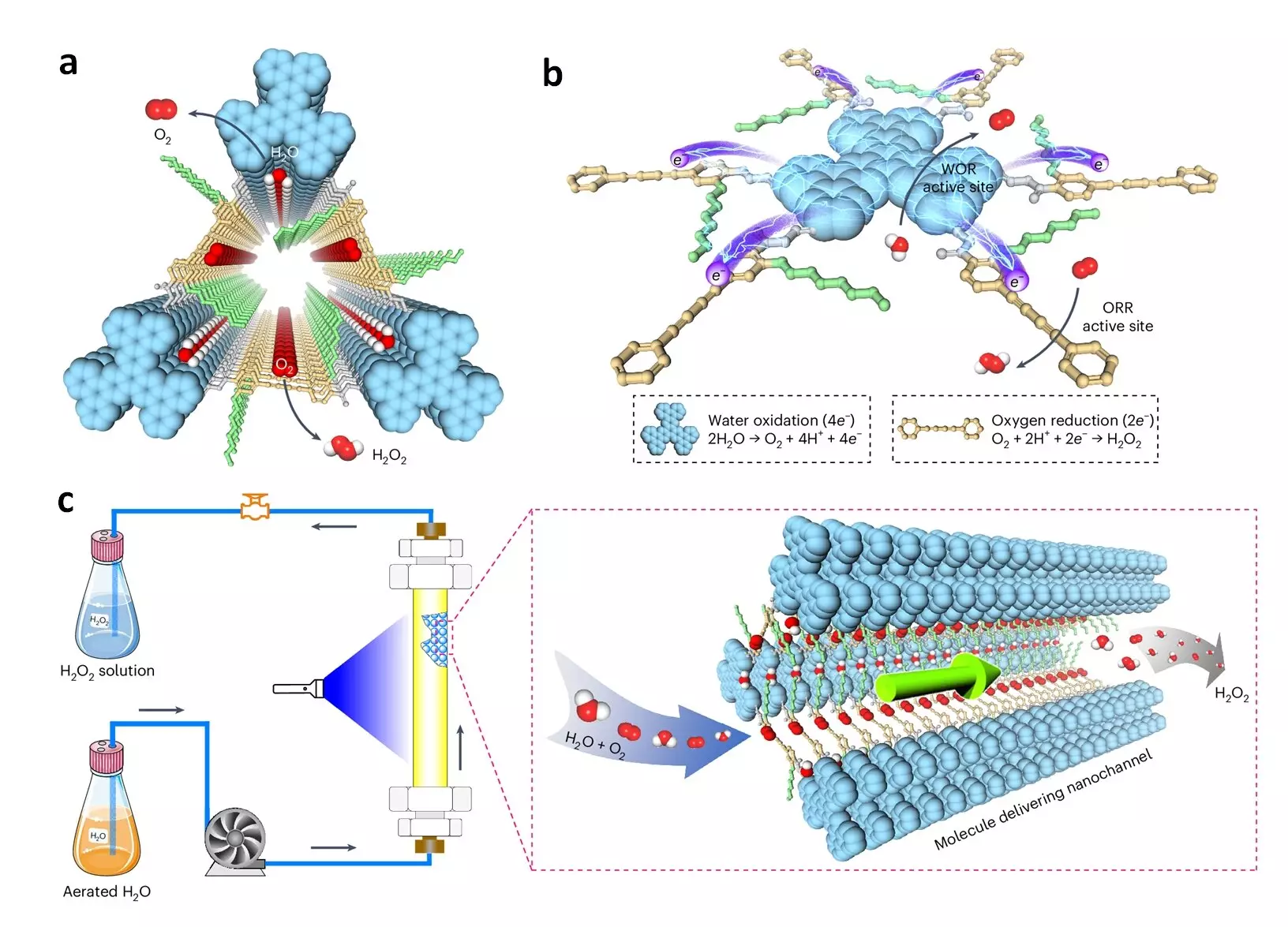The National University of Singapore (NUS) has made groundbreaking advancements in the field of chemistry by developing hexavalent photocatalytic covalent organic frameworks (COFs) that mimic natural photosynthesis. These COFs are designed for the production of hydrogen peroxide (H2O2), an essential industrial chemical. Unlike the conventional method that involves using anthraquinone as a catalyst, the artificial photosynthesis process utilizes sunlight as an energy source with abundant water and air as feedstocks. This offers a sustainable and promising alternative to the energy-intensive and resource-heavy anthraquinone process.
The research conducted by Professor Donglin Jiang and his team at the NUS Department of Chemistry addresses three critical challenges faced by artificial photosynthesis systems. These challenges include insufficient charge carrier generation, limited catalytic sites, and ineffective delivery of charges and reactants to the catalytic sites. Through the systematic design of the π skeletons and pores of hexavalent photocatalytic COFs, the researchers have successfully tackled these challenges, paving the way for efficient photosynthesis of H2O2.
The development of donor-alt-acceptor framework photocatalysts by the research team demonstrates a novel approach to enhancing catalytic efficiency. These photocatalysts transform into catalytic scaffolds upon irradiation, providing dense catalytic sites for oxygen reduction and water oxidation. The spatially segregated donor and acceptor columns enable efficient separation of holes and electrons, preventing charge recombination and facilitating rapid charge transport. Additionally, the hydrophilic pore walls of the photocatalytic COFs promote the passage of water and dissolved oxygen to the catalytic sites through capillary action.
The COFs developed by the NUS team exhibit exceptional performance metrics for H2O2 production. With a production rate of 7.2 mmol g–1 h–1, an optimal apparent quantum yield of 18.0%, and a solar-to-chemical conversion efficiency of 0.91% in bath reactors, these photocatalysts surpass the capabilities of traditional methods. When integrated into flow reactors, the COFs can sustainably produce over 15 liters of pure H2O2 solution under ambient conditions, showcasing their operational stability over an extended period.
Professor Donglin Jiang emphasized the significance of this research, stating that it encapsulates nearly two decades of collective efforts in the field of COFs. The development of novel photocatalysts that effectively address the challenges of charge and mass delivery to catalytic sites represents a significant milestone in the journey towards sustainable chemical production. The innovative approach adopted by the NUS research team holds promise for future applications in green chemistry and industrial manufacturing, offering a blueprint for enhanced efficiency and environmental sustainability in the production of valuable chemicals.


Leave a Reply